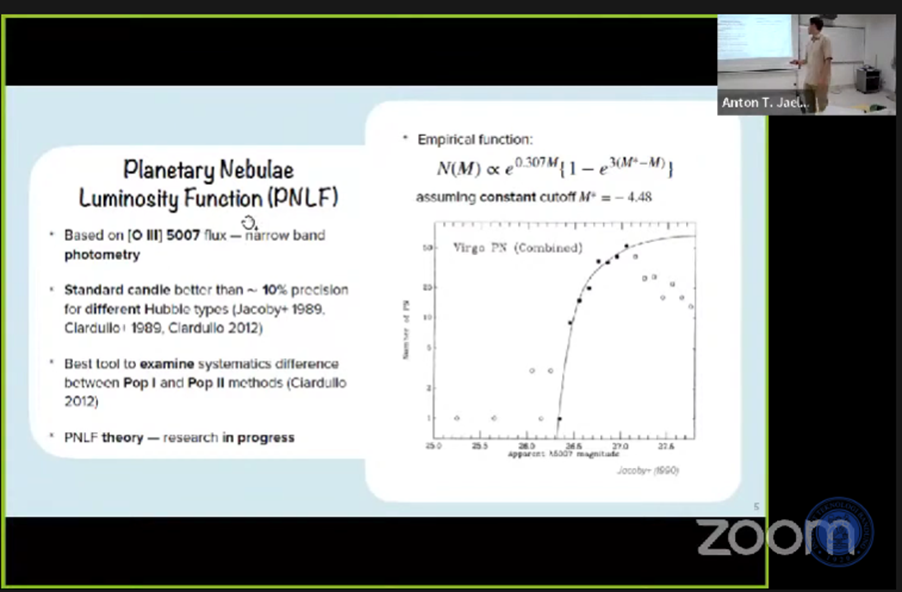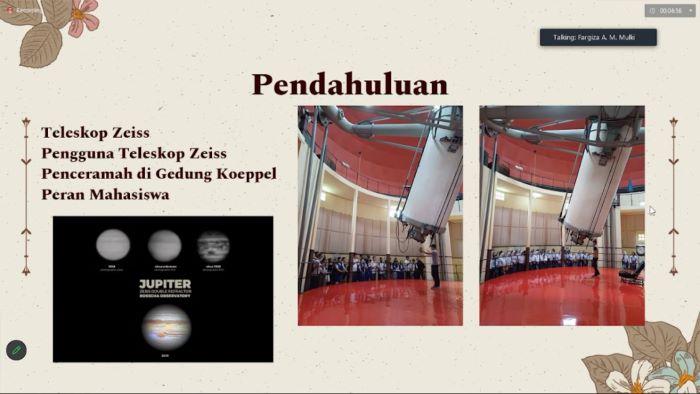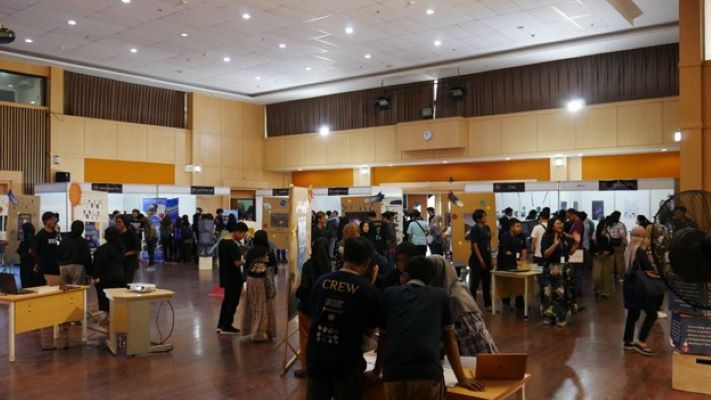ITB’s Undergraduate Program in Astronomy Organized Online Colloquium on The MUSE Planetary Nebula Luminosity Function of NGC 300

BANDUNG, itb.ac.id – The universe has always concocted curious phenomena in the eyes of many. Beginning with questions, various became objects to investigate and instigated new knowledge, including the field of Astronomy.
The Undergraduate Program in Astronomy, ITB’s Faculty of Mathematics and Natural Sciences (FMNS ITB) organized an online colloquium on The MUSE Planetary Nebula Luminosity Function of NGC 300 on Friday (3/6/2022). The lecture was delivered by Azliza. A. Soemitro, S.Si., M.Sc., of the Leibniz-Institut für Astrophysik Potsdam (AIP).
Nebula is a part of the many thin gas clouds and dust occurring in the spaces between the stars. Meanwhile, planetary nebula is a nebula emission composed of the shell of ionized gasses which kindles, expands, and emits during the asymptotic phase of various star species at the end of their life cycle.
Oftentimes, planetary nebula contain stars but never planets. The tens of thousands of years that this object possessed is short-aged relative to a star’s lifetime of a few millions. The term ‘planetary nebula’ itself was a mistake coined by William Herschel in 1785.

The MUSE Planetary Nebula Luminosity Function is a distance indicator with 10?curacy, at par with the cepheid method and the red giant branch point. However, in galaxies that form stars not unlike NGC 300, ionized nebulae such as the remnant of supernovas or compact HII regions tend to be misclassified as planet nebulae (PNe) and reduces the reliability of the MUSE Planetary Nebula Luminosity Function.
“The method we used to investigate the MUSE Planetary Nebula Luminosity Function is through observing a galaxy with the wavelength of oxygen 5007, then searching for planetary nebulae portrayed in dot-point form. The X axis represents pseudo magnitudes and the Y axis a few planetary nebulae. This observation can be supported with the power law as well,” explained Azlizan.
Aside from investigating the MUSE Planetary Nebula Luminosity Function, there are other aspects requiring further examination such as the effective temperature and its excitation class, investigation of optical thickness as a secondary indicator, and research on post-AGB models created by Miller Bertolami.
Reporter: Yoel Enrico Meiliano (Food Engineering, 2020)
Translator: Firzana Aisya (School of Life Sciences and Technology, 2021)

scan for download








